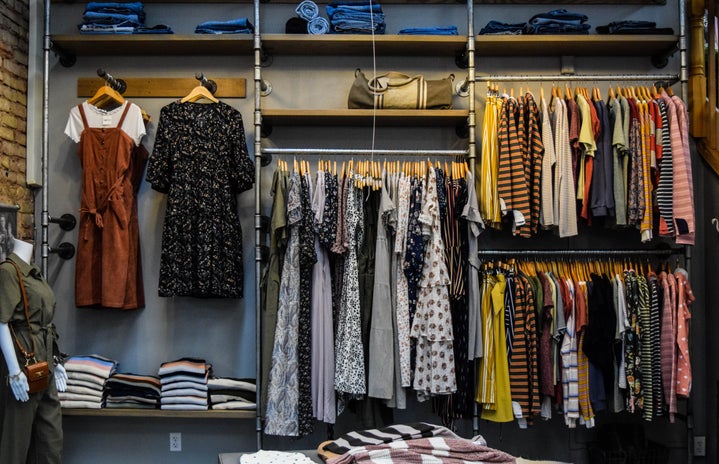It’s so easy to walk into a Forever 21 and snatch up a cute top for under $10. However, have you ever stopped to think about who makes the clothes you wear or where they come from? We recommend that you watch “The True Cost” on Netflix for a more in depth look at how fast fashion is affecting our world, but here are two quick points to get you started:
According to Press-Telegram, most of our clothing used to be made in the U.S., but almost all of it is now made overseas in countries like Bangladesh and Cambodia, where workers produce items under harsh conditions for less than a living wage.
The True Cost documentary notes that on average, an American annually produces 82 pounds of textile waste.
How many times have you looked into your closet and felt like you had nothing to wear? Retail therapy may seem like it’s doing the trick when you’re carrying all of those cute bags home, but overtime it just creates clutter. Your space can have a lot of influence on how you feel, so why not focus on bringing in items that you truly love?
This brings us to the “slow fashion” movement, a response to the fast fashion industry, where clothing is treated as easily disposable. The slow fashion movement strives to create a more circular clothing lifecycle instead of the linear one we see with fast-fashion items where you’ll wear them a few times then throw them away. Here are four ways you can participate in the slow fashion movement and decrease the negative impact the fashion industry has on the environment.
Thrifting
Thrift stores, Poshmark, and Depop are great ways to shop second hand. You can still get your retail therapy and feel good knowing that you’re creating a longer life cycle for the clothing you buy. Plus, you’ll end up with unique pieces that you’d never find at a fast-fashion chain.
Repurposing Your Old Clothes
Not everyone can be a seamstress, but a quick search on YouTube for “diy clothing hacks” will inspire you to rework the things you already have in your closet. Simply adding a patch to cover a stain on a t-shirt or distressing a pair of old jeans can breathe new life into your wardrobe.
Clothing Swap
You know what they say, one person’s trash is another’s treasure. Go through your wardrobe for things that aren’t quite your style anymore or don’t fit but are still in good condition. Then get together with your favorite fashionistas and swap away.
Shopping Ethical/Sustainable Brands
Although they can be a bit on the pricier side, brands like Reformation and Everlane are great for shopping more ethically and sustainably if second hand shopping isn’t for you. There’s also an app you can use called Good on You, which provides ratings for clothing stores based on sustainability, supply chain, and the use of animal products to help you become a more informed shopper.
We hope we’ve inspired you to take a closer look at how you fill your wardrobe this season!



